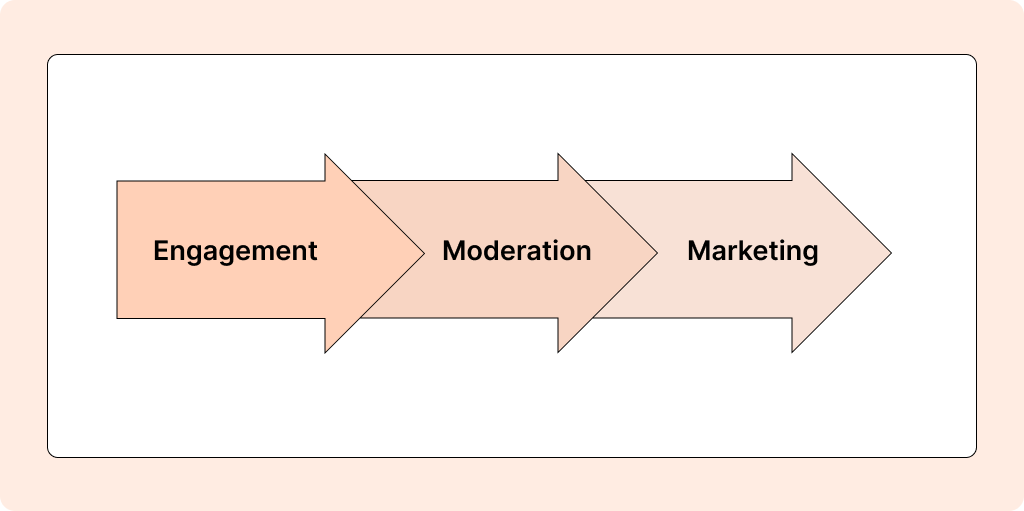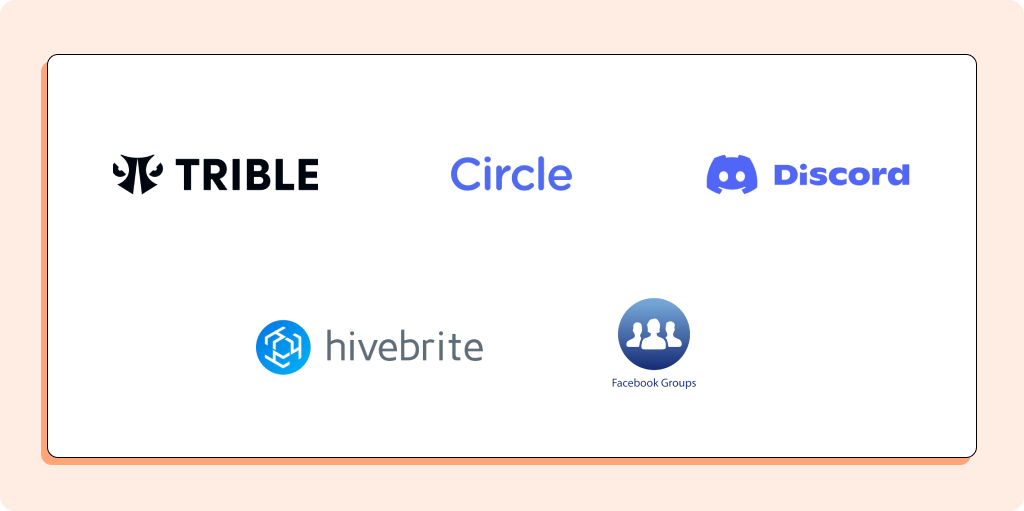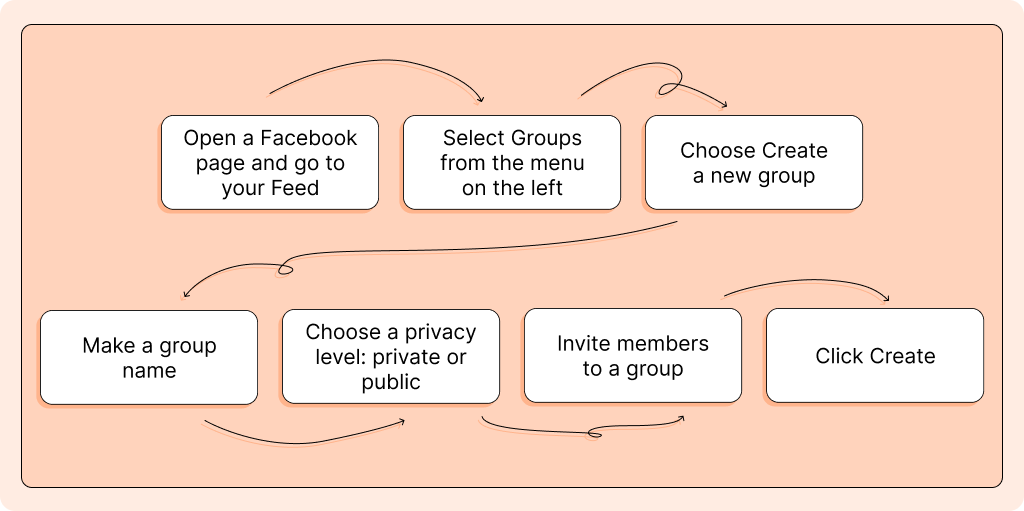 Nailing the Price Change Talk: Effective Messaging Strategies, Tips & Templates
Nailing the Price Change Talk: Effective Messaging Strategies, Tips & Templates
Learn how to effectively communicate price changes to your customers with our expert tips. Balance customer trust and loyalty while scaling your business!

We are social beings living in communities called families, sports clubs, hiking groups, etc. The key tenet of a community is the same interests shared by its members. Online communities have the same principle, but they exist in a virtual environment only. As members of online communities, people share the same interests, goals, and values; they face the same challenges; they need to find solutions to the same problems.
Only a few communities start organically. Usually, they are started by online content creators, bloggers, or brands that want to encourage discussions on a particular topic. The content published on these online communities is moderated by these individuals or brands to comply with community guidelines.
Sometimes people confuse online communities with social networks. But there is a big difference between them. Unlike social networks, in online communities, people don’t know each other. But the shared interest and love for a particular thing make people closer. According to a study made by Global Web Index:

Online communities can be different but very similar to each other. They may take different forms and shapes depending on the needs of their members but share the same features:
Now that you know enough about online communities and their key characteristics, you might want to ask “what is the first step in community organizing and building?”. Let’s discuss 13 methods of how one can build an online community.
Building a community isn’t just about getting a lot of likes and comments. It’s about giving value to subscribers, creating a sense of belonging and ownership, and turning them into advocates of your channel or blog. Here are 13 of the best ways to build community.
The first requirement for building an online community is to create content that is relevant to your target audience. This means that your content should discuss issues and address the specific concerns of your audience. It should be feasible and contain actionable steps to solve a problem. For example, a blog post or Instagram reel on “How to Stay Hydrated in the Summer” should not contain theoretical advice. Instead, it should provide practical advice and easy-to-implement solutions.
A tone of voice is your personal way of sharing information. It’s not only how you speak, it’s also the way you write, the words you choose, the manner of speaking in general. Your tone of voice can be quite similar to your daily life attitude, but it also can differ much. Basically, the choice would depend on the content. The main benefit of developing a tone of voice is that you become unique, you stand out among lots of similar content in the very same niche.
The number one reason why some online content creators fail to create community is that they talk at their audience instead of talking with them. Successful bloggers know how important it is to encourage your audience to interact with you and listen to what they have to say. The best way to do so is by asking your followers to comment. People love sharing their opinions, stories and experiences. All you have to do is guide them by asking a specific question like “Do you think it’s right?” or “Let me know in the comments what you think about this.”
After encouraging your audience to share their opinion, you should engage with them by replying to their comments. Make sure you answer their questions, provide clarifications if they have any, and thank them for their nice feedback. It’s a great way to acknowledge that people are taking their time to read or watch your content and care enough to provide feedback. Let them know that you don’t take it for granted and are thankful for their support.
On the other hand, by engaging with your audience you’ll stand out from the crowd. Not everyone is doing this, especially after growing the audience to a certain number. According to Gary Vaynerchuk, a famous digital marketer, 99% of YouTube and Instagram creators don’t reply to comments, and it’s “killing” them.
Networking is the key to community building. You are not the only qualified specialist in your niche. There should be other experts with a professional reputation in the field, and it’s a great idea to partner with them and create valuable content for your community. For example, whenever you plan to talk about nutrition and diet, you can reach out to a qualified nutritionist and create useful and actionable content with them. Or the next time you’re discussing topics related to healthy lifestyles and training, why not contact an athlete or gym coach and propose a collaboration?
Social media challenges are a relatively new method of user engagement. They especially gained momentum during the COVID-19 pandemic, as people found them a good method of killing boredom. Besides, challenging each other on social media has become a way to connect with others. For example, the #tenyearchallenge initiated by Facebook gained 2.5 million hashtag mentions in a month.
Similarly, you can launch an interesting and exciting challenge for your community. For example, if your blog is about fashion, you could run a 7-day style challenge where you choose the color of the day. Then encourage your followers to wear that particular color on that day, take a photo of themselves and post it on Instagram.
Another way to create community and expand your audience is to link to relevant resources. For example, when you’re talking about travel, it’s a good idea to include some tips from your favorite YouTube travel vlogger in your content and link back to their videos. Don’t forget to tell the vlogger about the mention of him in your content and give the correct backlink to his video. This might encourage them to share your content with their audience.
Similar to leaving comments, you should also organize polls, quizzes, and contests. People like replying to engaging and fun questions. For example, “Do you like going out or staying at home?” “Are you a dog or cat person?” “Which dress do you think I should wear on the first date?”
By running such polls you boost your engagement rate and get valuable insights into your followers’ habits, interests, lifestyles, etc. You can use this information to create more targeted posts.
Posts and videos, Instagram reels, or TikTok videos aren’t enough; people crave live interaction. Among all the methods and ways to build community, live streaming is on top. According to statistics, the number of users watching live videos in the USA was 126.7 million in 2019. This number is expected to grow to 164.6 million by 2024 .During live streams, broadcasters like to reply to their viewers’ questions, play games, or discuss something. If it’s something your audience is interested in, they’ll join.
Sometimes your audience can give you a great idea for a new topic. Make sure to give them credit for inspiring you and being brave enough to share their stories with thousands of people. You can either mention it in your next videos or posts or tell it in stories. Regardless of the format you choose, your mention of it will make your followers feel appreciated. This will certainly boost the engagement and involvement of the community.
You should always try to find new ways of reaching people who might be interested in the content you create. One of the best ways of doing so is by asking your readers or followers to send the content piece or video to the person who might need it or tag them in the comments.
If you want to create a unique human connection with your followers, then you should post more unedited videos and photos. Most users are looking for influencers and bloggers they can connect with. For example, moms are not interested in reading the content of an influencer who is always well-dressed, whose kids are always well-behaved, and who always has time for himself. Instead, they want to see someone whose kids are just as messy as theirs, who is struggling to rebuild their postpartum body, and who is terrible at managing time. In this way, the issues raised by such influencers will resonate with their audiences who also experience them.
Real-life interactions are a game-changer in community building. They may become a logistical nightmare if you have a huge audience, but if you can meet a handful of your followers, sometimes it can be amazing. For example, every time you’re in New York, you can invite a couple of your followers to have a cup of coffee with you. It can have a good impact on your community in two ways:

Tribe is one of the best solutions that allows you to create the best online community platform. It’s a no-code solution where you can customize everything, including the layout, widgets, and colors, and tailor them to your needs. Once new members set up their profiles, they can participate in groups, connect with other members. This user-generated content is SEO optimized. The platform also has powerful analytics.
Circle is one of the top online community apps that impresses with its minimalistic approach to design and powerful features. It’s pretty easy to facilitate private messages, keep the content organized, etc. The simplicity of design is a huge advantage for members as well. It’s a great pleasure to work with a user-friendly interface, participate in discussions, navigate different community boards, etc.
Discord is one of the free community platforms. The platform supports live streaming, video and audio calls, and instant messaging. Members can use the same profile to join different communities, which makes it easier for people that want to target users that already use Discord. While the platform is mainly free, users can also upgrade their profiles and unlock some additional features.
Hivebrite is on top community platforms, it is designed to target nonprofit organizations and professionals in a certain field. Hiverbrite is a close relative of LinkedIn: members can network, collaborate, and share professional tips. The platform allows the sharing of different media files like presentations and videos. Here you can also create a job board where members post their job opportunities. Job seekers, on the other hand, can use the features of uploading resumes and applying for jobs.
Among social media platforms, Facebook has the biggest user base. So, it’s completely natural for content creators and brands to engage with their audience in Facebook Groups. Unlike other community platforms, there isn’t much to customize in Facebook Groups. Just set up a profile and cover images, write a headline, and set up community rules and guidelines. But make sure that your group complies with Facebook Community Standards.
You can either moderate the posts published by users or not. If you choose to moderate the posts, every time a member submits it, you should view it, and make sure it meets the community rules.

To personalize or brand a freshly created group upload a cover picture, add some description, and fill in as much information as you have. We recommend adding admins to your Facebook group and grant them different levels of access in order to manage your feed better.
Once you have created that special connection between you and your community, you can monetize it. Usually, content creators prefer advertisements and sponsorships, but some of them create their own products. Here are some ideas:
Luckily, most community platforms include built-in features that allow adding these products to the community platform. Whether your community members will be interested in buying it or not depends on how attractive, interesting, and accurate the product description is. The perfect product description should convey the benefits of the product, describe its features, and tell a story. The more detailed the product description is, the easier it will be for your audience to differentiate you from your competitors.
Now, you know everything about online communities and the way they work. You know that community building isn’t only about setting up the community management platform and inviting people to join. To prove that, we would like to share our own example. We’ve made the TRIBLE Creator Community to share, inspire and unite. We invite content creators from different fields with an extremely broad range of skills. Our main goal is to set up a useful feed giving marketing, engagement, and monetization tips for those who either have their own application or plan to have one.
But TRIBLE Creator Community is not a passive blog-like group. We welcome discussions and comments, constantly reacting to members’ needs and creating new content according to them. If you want to see how we manage it and to get a bit of motivation and advice, follow the link, and we will be happy to see you.